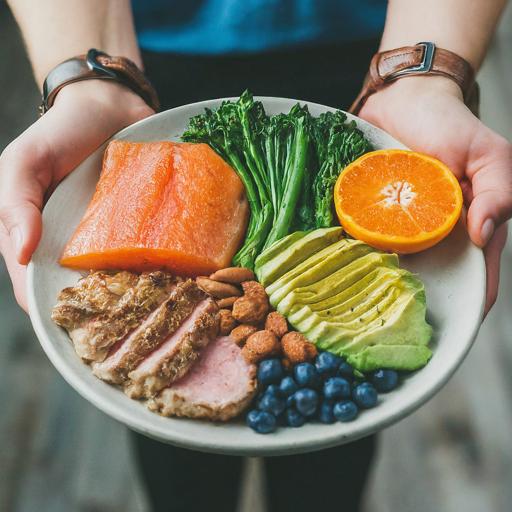Calories, Macros, or Portions
Fueling Your Body, Not Just Counting Numbers

For our purposes and my approach for the majority of my clients it's all about what you put on your plate.
The debate over whether to focus on calories, macronutrients (macros), or portion sizes for achieving health and fitness goals is a complex one with no one-size-fits-all answer. Each approach has its merits and potential drawbacks, and a balanced perspective might be the most effective strategy.
Calories represent the energy content of food, and maintaining a calorie deficit is crucial for weight loss (Hall, 2017). However, fixating solely on calories can lead to neglecting the nutritional value of food and potentially create an unhealthy relationship with eating.
Source icon
Macros, on the other hand, emphasize the balance of protein, carbohydrates, and fats in the diet. This approach recognizes that different nutrients play distinct roles in the body and can help individuals optimize their intake for specific goals (Schoenfeld & Aragon, 2018). However, tracking macros can be cumbersome for some and may lead to obsessive behaviors.
Source icon
Portion control focuses on the quantity of food consumed and can be a valuable tool for managing intake and preventing overeating (Rolls, 2009). This approach is relatively simple and easy to implement, but it might not consider the varying energy densities of different foods.
Source icon
A holistic approach, incorporating elements from each of these methods, might be the most sustainable and effective way to achieve nutritional goals. By understanding the calorie content of foods, balancing macronutrient intake, and practicing portion control, individuals can develop a healthy relationship with food, optimize their nutrition, and achieve their desired outcomes.
Ultimately, the best approach is the one that works best for the individual and their specific needs. Experimenting with different strategies and finding a balance that feels sustainable and enjoyable can lead to long-term success.
Calories represent the energy content of food, and maintaining a calorie deficit is crucial for weight loss (Hall, 2017). However, fixating solely on calories can lead to neglecting the nutritional value of food and potentially create an unhealthy relationship with eating.
Source icon
Macros, on the other hand, emphasize the balance of protein, carbohydrates, and fats in the diet. This approach recognizes that different nutrients play distinct roles in the body and can help individuals optimize their intake for specific goals (Schoenfeld & Aragon, 2018). However, tracking macros can be cumbersome for some and may lead to obsessive behaviors.
Source icon
Portion control focuses on the quantity of food consumed and can be a valuable tool for managing intake and preventing overeating (Rolls, 2009). This approach is relatively simple and easy to implement, but it might not consider the varying energy densities of different foods.
Source icon
A holistic approach, incorporating elements from each of these methods, might be the most sustainable and effective way to achieve nutritional goals. By understanding the calorie content of foods, balancing macronutrient intake, and practicing portion control, individuals can develop a healthy relationship with food, optimize their nutrition, and achieve their desired outcomes.
Ultimately, the best approach is the one that works best for the individual and their specific needs. Experimenting with different strategies and finding a balance that feels sustainable and enjoyable can lead to long-term success.
Updated: August 13, 2025 10:19
References
Hall, K. D. (2017). A review of the carbohydrate-insulin model of obesity. European Journal of Clinical Nutrition, 71(3), 323-326.
Rolls, B. J. (2009). The relationship between dietary energy density and energy intake. Physiology & Behavior, 97(5), 609-615.
Schoenfeld, B. J., & Aragon, A. A. (2018). How much protein can the body use in a single meal for muscle-building? Implications for daily protein distribution. Journal of the International Society of Sports Nutrition, 15(1), 10.
Comments
You must log in to post a comment.